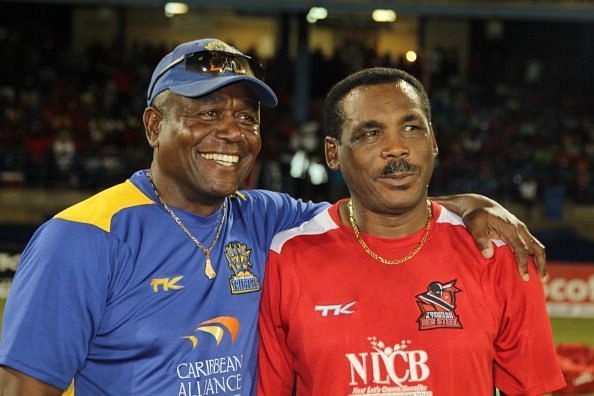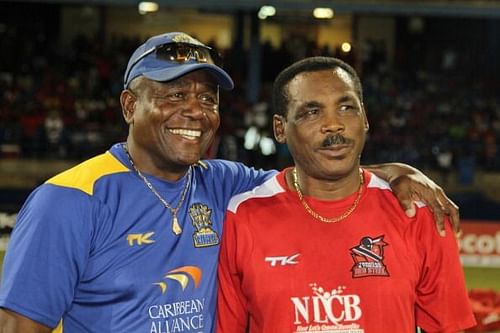
Cricket World Cup history: Desmond Haynes, the indispensable partner in a blue chip twosome

It is often said that fast bowlers hunt in pairs. There have been a number of great fast bowling pairs throughout history. There are also many examples of great spinning duos, and a number of accomplished middle-order batsmen who played together.
But there aren't so many examples of truly great pairs of opening batsmen. Sir Jack Hobbs and Herbert Sutcliffe made for perhaps the greatest.
Then there were Bobby Simpson and Bill Lawry. Geoff Boycott and John Edrich was a fine pair, as were Justin Langer and Matthew Hayden later. They have all, of course, been Test match opening batsmen.
In modern one-day cricket we have had the Sachin Tendulkar-Sourav Ganguly, Tendulkar-Virender Sehwag, Mark Waugh-Adam Gilchrist and Gilchrist-Hayden combinations.
The one pair of opening batsmen that partnered in both Tests and one-day cricket with great success was Gordon Greenidge and Desmond Haynes. They played a key role in the dominance of the West Indies between the mid-70s and the early 90s in both forms of the game. They, in fact, formed the vanguard of a great team.
Haynes was a very prolific scorer in one-day internationals, holding the records for the highest aggregate as well as centuries till a genius called Tendulkar obliterated them. In the World Cup, Haynes fell a bit short of his own lofty standards, but he was a faithful soldier in victory and in defeat.
Fittingly, on his World Cup debut in 1979, Haynes put on 138 with Greenidge against India. Haynes scored 47 before Vivian Richards helped Greenidge register a facile nine-wicket win.
With the next match against Sri Lanka rained off, and an early dismissal at the hands of New Zealand’s Richard Hadlee, the stage was set for the brilliant opening pair to display their class in the semi-final.
Greenidge and Haynes flayed the Pakistan attack, bringing up another century stand. They put on 132 runs, with Haynes hitting 65 off 115 balls with 4 boundaries. That was the platform on which the West Indies built a near-300 total that was a prerequisite to overcome the strong Pakistani batting line-up on this true Oval pitch.
As in the 1975 final, so also in this one, there was a West Indies top-order collapse. Greenidge was run out early, and Haynes perished for 20. The day belonged to Vivian Richards and Collis King, as they tore apart the English bowling. The great Caribbean side lifted the Prudential Cup again.
The West Indies stuttered for the first time in the World Cup in 1983. Haynes got off to good starts in several innings but could not convert most into substantial knocks. Chasing India’s 262 for eight in 60 overs in a rain-affected match, the reigning champions never raised visions of a win. Haynes and Greenidge scored 24 apiece, putting on 49, but the West Indies slid to their first-ever defeat in the premier tournament.
It was only in the return matches that Haynes began running into form. As the West Indies sought retribution for the shock defeat in the first match, Haynes lost Greenidge early. But he joined forces with Richards to beat back the Indian attack. They put on 101 runs before Haynes was consumed by Mohinder Amarnath for 38.
The Australians were next in the line of fire. The old firm of Greenidge and Haynes was back in business again. Undaunted by Australia’s huge total of 273, the great pair raised 79 runs, before Haynes was bowled by left-arm spinner Tom Hogan for 33. With Richards in supreme form, the champions cantered home.
With the campaign firmly back on track, Haynes set out to enjoy himself as they took on Zimbabwe. His partner, for a change, was Faoud Bacchus. They flayed the buoyant Zimbabweans, putting on 172 and steering the side to a 10-wicket triumph in 45.1 overs. Haynes returned unbeaten with 88 off 136 deliveries punctuated by 9 boundaries, his highest World Cup score thus far.
The semi-final was a repeat of the clash of four years earlier. This time Pakistan were no match, though both Haynes and Greenidge were unable to hit up big scores.
Having started the tournament with a defeat at the hands of India, the West Indies finished in exactly the same way in an amazing final. But while Haynes and Richards were at the crease, the team seemed to be coasting at 50 for one, in pursuit of the opponents’ modest total of 183.
Haynes fell for 13 and in next to no time the Prudential Cup slipped from their grasp. The golden reign of the West Indies was over.
Four years later, when the tournament was staged in the sub-continent, Haynes hit his only century in the World Cup - and ninth overall - against Sri Lanka at Karachi. He hit 105 off 124 balls with a six and 10 fours, putting on a tremendous 182 for the third wicket with Richards. By now Greenidge had played his last World Cup, being unavailable for this one.
Haynes was partnered by Carlisle Best and Phil Simmons. He seemed to combine well with the latter, raising 91 against Pakistan, of which Haynes scored 37, and 62 in the second outing with Sri Lanka.
The West Indies were not the force that they were earlier, and apart from his lone hundred Haynes was unable to put together a score of substance. In one last-ditch effort the West Indies trounced Pakistan before bowing out, Haynes having featured in a 65-run second-wicket partnership with Richie Richardson.
A young champion by the name of Brian Lara emerged in 1992. He was drafted to open with Haynes, the elder statesman, who was passed over for captaincy - the honour going to Richardson instead.
Haynes and Lara began their association in style, stroking their way to a 175-run stand in 37 overs against Pakistan. The partnership ended only when Lara retired for 88, a Wasim Akram snorter pitching on his foot.
Haynes then combined with Richardson to knock off the remaining 46 runs and the West Indies registered a 10-wicket win. Haynes returned unbeaten with 93 off 144 deliveries, having hit 7 boundaries.
After that high, Haynes’ scores followed the pattern of his 1987 performance; he got many useful starts without playing the big knocks that an opening batsman of his class should have. He took 38 off the English attack, and another 30 when the West Indies played South Africa for the first time ever.
Haynes played subdued roles in half-century stands with Lara against New Zealand and India.
He scored 38, and put on 66 for the second wicket with Simmons when they met Sri Lanka at the Berri Oval in South Australia. The big scores regularly eluded Haynes in the World Cup., and the West Indies failed to reach the semi-finals for the second time in succession.
Haynes was one player who saw the fortunes of the West Indies rise and fall. Being part of the great teams led by Clive Lloyd and Vivian Richards, he experienced the euphoria of the 1979 title triumph, the disappointment of the upset in the 1983 final, and the ignominy of the continued slide in 1987 and 1992. But he served his team manfully, notching up the most World Cup appearances for the West Indies and becoming their second-highest scorer after the great Vivian Richards before bowing out.
Haynes may not have been spectacular in the World Cup, unlike his performance in other one-day internationals, but he was moderately consistent in all the editions of the showpiece event. His was truly a yeoman service to the charmers from the Caribbean islands.
Desmond Haynes’ World Cup batting and fielding record:
Matches 25, Highest Score 105, Runs 854, Average 37.13, Strike-rate 57.50, Hundred 1, Fifties 3, Catches 12
Also read – World cup tied matches
Follow Sportskeeda for all the updates on World cup points table, news, live scores, World Cup schedule, most runs, most wickets and fantasy tips.